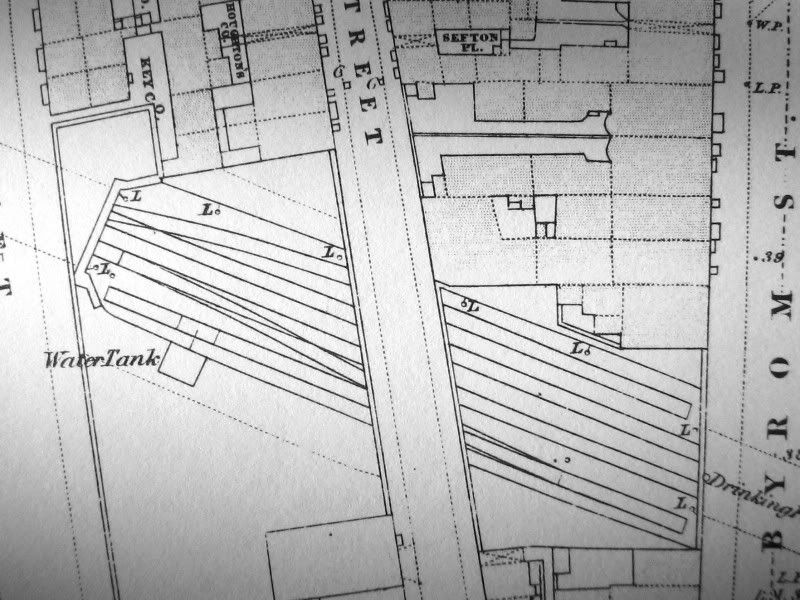Nice one Marky. Edge Hill is to the right, Waterloo Goods Stn to the left. It looks like a full siding to me, not a runaway - well not from Edge it is not.
Cable haulage continued through the Waterloo Tunnel until 1895 when it went over to locomotive haulage and the line was extended to a new passenger station, Riverside, near the pier head, The Wapping Tunnel went over to locomotive haulage the following year.
About the tunnels
If a train is hurtling down from Edge Hill, there is no way it can move into any sand trap. Looking at Mike Turner's drawing. The cutting is near the bottom of the incline in the tunnel. The tunnel drops from both ends. Any train running away will hit bottom and then run upwards and slow down, then run backwards down to Byrom St. Probably the reason the cutting was there, to retrieve any runaways. For this to occur the ropes would need to be detached in some manner and the brakes or operator disabled. The Wapping tunnel had brake vans put on some trains right up until the 1950/60s. I am not sure if brake vans were hitched from the start at Waterloo Tunnel.
As the tunnel ran down from both portals there must have been winding engine at both ends. The Cutting may have been the hitch up point. Roll down from any end, hitch up and get pulled up.
Look at the sidings, only big enough for one wagon on one. I assume this was to attach/detach brake vans to trains.
I am no expert in rail working either, but common sense indicates that this siding was well used and had something to do with the rope winding mechanisms.

The cutting is clearly a well used siding, that was used every day.
I doubt there was a platform there, but men had to access this siding and it would be feasible that a wooden staircase came down from the top at Hodson St. Oriteland's assertions are getting meatier.
The water tank? Maybe for the men to use for drinking/washing. No locos used the tunnel at this time, so no need for water for locos or fuel for locos. The tank looks like it is at ground level outside of the cutting. Water ran down into the cutting.
What about drains? Rain entered the cutting and it was near the bottom of dip in the tunnel. Hand pumps to take water out?




 Reply With Quote
Reply With Quote



Bookmarks